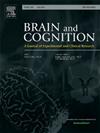分离掩蔽词引物中的 FN400 和 N400 事件相关电位成分
IF 1.4
3区 心理学
Q3 NEUROSCIENCES
引用次数: 0
摘要
遮蔽的单词重复(引物)会增加外显识别测试中的 "旧 "反应,这被归因于更流畅的目标处理。这种结果取决于与 "流畅性中性 "的对照质点的比较。通常的做法是为此目的使用不相关的词素,但有证据表明这些词素实际上会降低目标词处理的流畅性(不流畅性)。我们在三项实验中收集了 ERP 和行为测量结果,这些实验使用非字母符号作为流畅性中性对照,并使用匹配预设来提高处理流畅性。实验 1 比较了不相关的单词预设和正字法不同的非单词预设,以确定这些预设是否会导致语言不流畅。实验 2 对比了正字法上不同的非词引物和相似的非词引物。实验 3 检验了语义相关的词素,以验证实验 1 和 2 的理论预测。所有三个实验都证明了 FN400 和 N400 是不同的 ERP 成分,因为许多预示只改变其中一个成分。相对于对照条件,匹配(实验 1 和 2)和语义引物选择性地影响 N400 波幅,而不相关的单词引物和正字法不同的非单词引物选择性地影响 FN400 波幅。意外流畅性归因模型(Mecklinger 和 Bader,2020 年)为理解与每个 ERP 成分相关的认知过程提供了一个框架。本文章由计算机程序翻译,如有差异,请以英文原文为准。
Separating the FN400 and N400 event-related potential components in masked word priming
Masked word repetition (priming) increases “old” responses on an episodic recognition test, which has been attributed to more fluent target processing. Such results hinge on comparisons to a control prime that is “fluency-neutral”. A common practice is to use unrelated word primes for this purpose when some evidence suggests that they actually decrease target word processing fluency (disfluency). ERP and behavioral measures were collected in three experiments that used non-letter symbols as a fluency-neutral control and match primes to increase processing fluency. Experiment 1 compared unrelated word primes and orthographically dissimilar nonword primes to determine whether these primes cause disfluency. Experiment 2 contrasted orthographically dissimilar and similar nonword primes. Experiment 3 examined semantically related primes to test theoretical predictions derived from Experiments 1 and 2. All three experiments provide evidence that the FN400 and N400 are distinct ERP components because many primes altered only one of the components. Relative to the control condition, match (Exps 1 & 2) and semantic primes selectively affected N400 amplitudes, whereas unrelated word primes and orthographically dissimilar nonword primes selectively affected FN400 amplitudes. The Unexpected Fluency Attribution model (Mecklinger & Bader, 2020) provides a framework for understanding the cognitive processes associated with each ERP component.
求助全文
通过发布文献求助,成功后即可免费获取论文全文。
去求助
来源期刊

Brain and Cognition
医学-神经科学
CiteScore
4.60
自引率
0.00%
发文量
46
审稿时长
6 months
期刊介绍:
Brain and Cognition is a forum for the integration of the neurosciences and cognitive sciences. B&C publishes peer-reviewed research articles, theoretical papers, case histories that address important theoretical issues, and historical articles into the interaction between cognitive function and brain processes. The focus is on rigorous studies of an empirical or theoretical nature and which make an original contribution to our knowledge about the involvement of the nervous system in cognition. Coverage includes, but is not limited to memory, learning, emotion, perception, movement, music or praxis in relationship to brain structure or function. Published articles will typically address issues relating some aspect of cognitive function to its neurological substrates with clear theoretical import, formulating new hypotheses or refuting previously established hypotheses. Clinical papers are welcome if they raise issues of theoretical importance or concern and shed light on the interaction between brain function and cognitive function. We welcome review articles that clearly contribute a new perspective or integration, beyond summarizing the literature in the field; authors of review articles should make explicit where the contribution lies. We also welcome proposals for special issues on aspects of the relation between cognition and the structure and function of the nervous system. Such proposals can be made directly to the Editor-in-Chief from individuals interested in being guest editors for such collections.
 求助内容:
求助内容: 应助结果提醒方式:
应助结果提醒方式:


